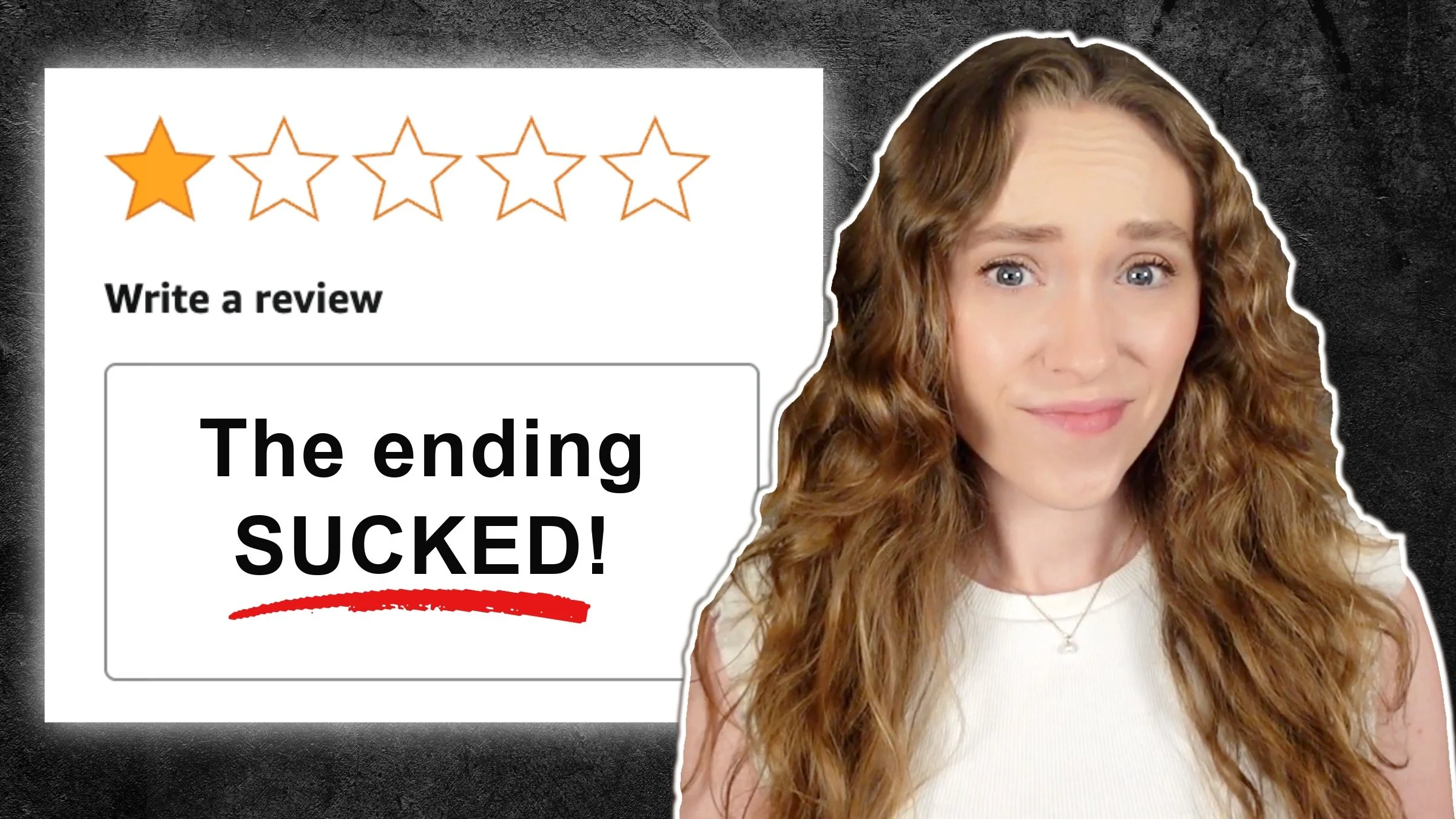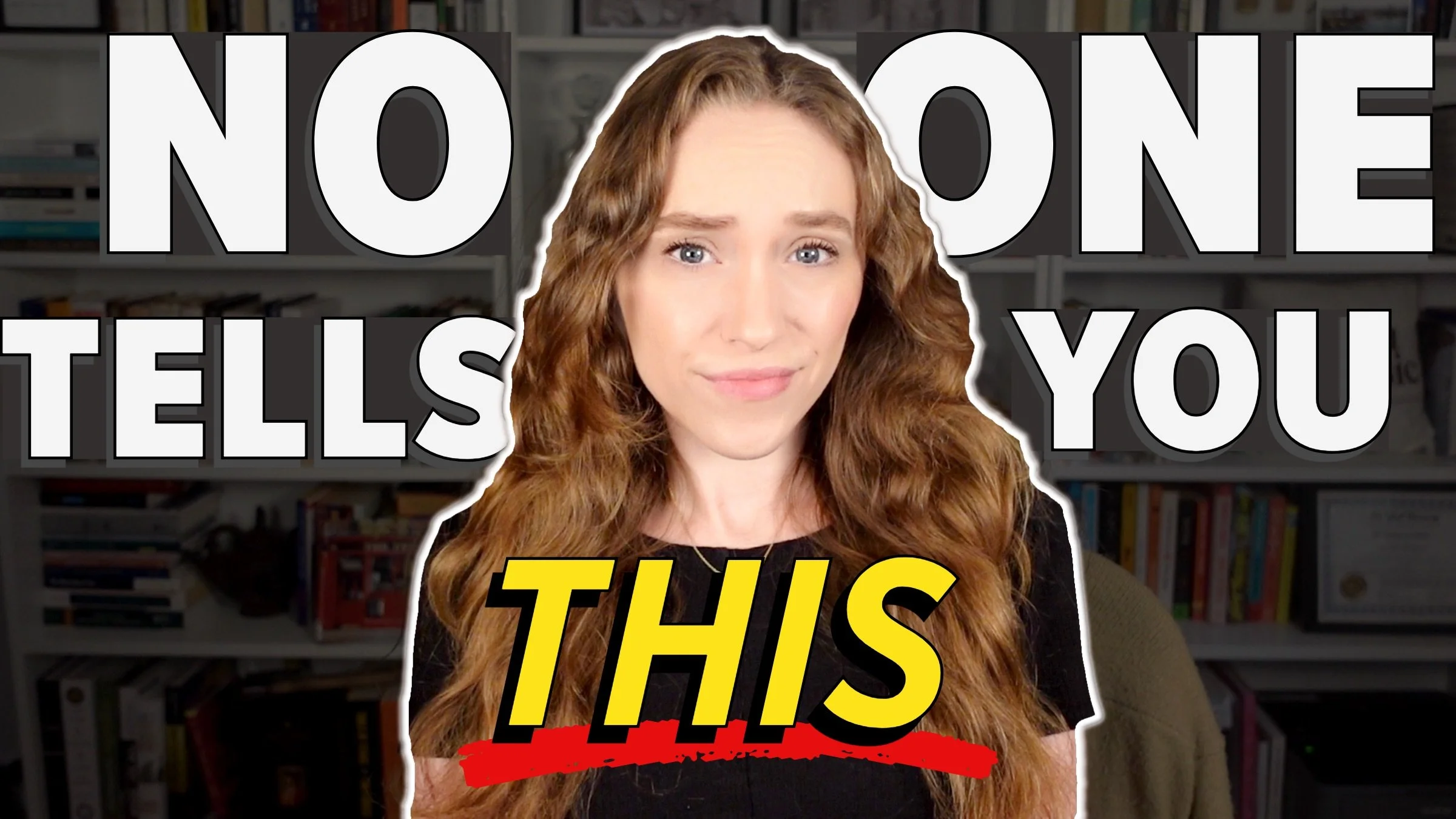Write Stronger Stories with Pixar’s 22 Rules of Storytelling
HIT PLAY OR READ THE POST BELOW:
How does Pixar manage to craft some of the most phenomenal stories that touch audiences of all generations? Pixar has nailed the art of compelling storytelling, and all novelists should take note of their tactics. Luckily, we don't have to guess what they do to come up with their stories, because back in 2011, former Pixar story artist Emma Coats tweeted Pixar’s 22 rules of storytelling. Since then, those rules have been reposted and used by creatives across industries.
I'm going to walk through all of the rules and give my perspective on how they can help you craft a stronger story.
1. You admire a character for trying more than for their successes.
If a character is perfect and achieves their goal with ease, then that would make for a very short, very boring story. Readers want to see your characters try at something and fail and then try again.
Even if your protagonist does ultimately achieve their goal at the end of the story (which is certainly a valid conclusion), we should see them struggle against obstacles to get there. Those struggles are key to making your reader connect with your character.
For example, take Finding Nemo. In the end, Marlin and Nemo are reunited successfully, but Marlin comes up against many struggles to get there, including sharks, jellyfish, and Dory's unpredictable behavior that sometimes leads them into trouble. The important thing is that we see him try and try again and continue to confront those obstacles, and that's what makes us connect with his character.
2. You have to keep in mind what’s interesting to you as an audience, not what’s fun to do as a writer. They can be very different.
For novelists, I would rephrase this tip slightly to read, “If you're hoping to publish, prioritize what's interesting to your reader rather than what's fun to you as the author.”
In the beginning stages of your story, you should write for yourself and write what's fun. Try not to let concerns about publishing and your reader and audience hinder your creativity at the early stages.
However, if your goal is to publish your book, then at some time you are going to have to shift your mindset and think more about prioritizing your readers’ experience of the story. What will make them pick up your book against all the others available to them on the shelf?
For instance, as the author, it might be fun to write 50 pages of your protagonist’s stream of consciousness, but that's likely not going to be the most engaging way for your reader to interact with your story. Once publishing is a goal, your reader should come first.
3. Trying for theme is important, but you won’t see what the story is actually about until you’re at the end of it. Now rewrite.
I interpret this to mean that you don't want to get too hung up on your overarching theme or the lesson that you want your story to convey in the drafting phase, because the themes and lessons can of course change as the story evolves. Through revisions, you might realize that the story's theme is actually something different than you initially intended, or you might find new ways to bring that original theme to light. I love this tip because it highlights the power of revisions, which is where I operate as a developmental editor.
I truly believe that revisions are where the magic happens. It's where you can go back into your story and add layers and depth to really take it to the next level. So at the drafting phase, it's okay to focus on just getting the story out and trust that developing the themes can come later.
4. Once upon a time there was ___. Every day, ___. One day ___. Because of that, ___. Because of that, ___. Until finally ___.
This is a basic way of boiling down the main structure of the story.
“Once upon a time there was ___” is where you introduce your protagonist.
“Every day, ___” is where you introduce their status quo, their circumstances at the beginning of the story.
“One day ___” is where you introduce the inciting incident, which is the thing that happens that changes their world.
“Because of that, ___” and “because of that, ___” indicates how the inciting incident creates a chain reaction of events that your protagonist must now face.
“Until finally ___” is when we see the character make a decision to enact change and ultimately achieve their objective.
Let's break down an example from a Pixar movie The Incredibles:
Once upon a time there was a superhero named Mr. Incredible who was forced to retire and live a normal life. Every day, he worked in a boring office, concealing his powers and living in the shadow of his former glory. One day he gets the opportunity to use his superhero powers again. Because of that, he faces new enemies and must bring his family into the conflict. Because of that, they all must work together to find a way to defeat the villain. Until finally, Mr. Incredible learns that his strength isn't in his powers, but in his family.
It can be a great exercise to try boiling down your plot to this template.
5. Simplify. Focus. Combine characters. Hop over detours. You’ll feel like you’re losing valuable stuff, but it sets you free.
This is something I work on constantly with my editing clients: streamlining and focusing the story and finding the true heart of it. That might mean “killing your darlings,” which can be painful — but just because you cut something from this book doesn't mean you can't reuse it later on in your writing career.
Try to drill down this specific story you are trying to tell in this novel. Whose story is it? What is the most important plot line and conflict? What POVs should we focus on? Only add in subplots and additional POVs that serve that main narrative. Otherwise, you run the risk of the story becoming too crowded.
6. What is your character good at, comfortable with? Throw the opposite at them. Challenge them. Make them respond.
We want to see your protagonist grow and evolve over the course of the story, and to do that you must put them in situations where their views or habits are challenged. So think about ways you can put your protagonist in new or uncomfortable situations that they have to navigate.
Let's break down an example from Monsters, Inc.:
Sully is the top scarer at Monsters, Inc., but he's pushed out of his comfort zone when he faces a new challenge: caring for a child. This task is ultimately what leads to his character's transformation, where he begins to question everything he thought he knew about the monster world and sees himself in a new light.
7. Come up with your ending before you figure out your middle. Endings are hard, get yours working up front.
This is the one tip that I don't necessarily agree with in all cases. I don't like to be overly prescriptive and tell authors that they must know the ending before they can write the rest of the story. I work with many self-proclaimed “pantsers” who have written great novels.
That said, many first drafts often fall into the messy middle problem, and this approach of knowing your ending, knowing where the story is going, could help mitigate that.
By thinking about your ending upfront, you will naturally ensure that all of the middle section leads up to it and builds a crescendo of suspense up to your climax, and that could potentially save you some time in revisions down the line. But plotting and pantsing are both valid ways to approach your draft.
8. Finish your story, even if it’s not perfect. In an ideal world you have both, but move on and do better next time.
It takes a ton of stamina to get through an entire novel draft and frankly, most give up before reaching the final page. But seeing your story all the way through to the end is one of the most powerful things you can do for yourself as a storyteller. You're going to learn so much and grow in your craft tremendously simply by completing a draft.
Remember that first drafts are meant to be imperfect and messy, sometimes even crappy. They don't even need to be great or even good, but finishing that crappy first draft is the first step toward crafting that polished story you’re envisioning.
9. When you’re stuck, make a list of what wouldn’t happen next. Lots of times the material to get you unstuck will show up.
I love this idea for beating writer’s block, because it gets you thinking about your story from another perspective and helps you rule out silly or cliche ways the story could pan out.
For instance, if you're in a scene where your character is trapped, you could list things like “the door doesn't suddenly unlock,” or “the police don't arrive immediately.” By ruling out these next developments, you're going to trick your brain into thinking about less obvious solutions that are therefore more interesting to explore.
10. Pull apart the stories you like. What you like in them is a part of you. You’ve got to recognize it before you can use it.
What are the books, films, and TV shows that you find yourself thinking about or returning to time and time again? Analyzing the stories that you are drawn to can tell you so much about yourself as a writer and as a person. What common themes do they explore? What types of characters do they feature? Why do you personally think you connect to those themes and characters? Once you recognize them, you can build on those in your own story.
Using Pixar movies as an example, let's say that Toy Story, Coco, and Inside Out are some of your favorites. As you dig deeper, you could discover that all three share a common theme of belonging:
In Toy Story, Woody is insecure about where he fits in in Andy's life.
In Inside Out, Riley's emotions struggle to help her navigate the change of moving to a new city, and they have to come to terms with the fact that all of them belong in Riley's life.
In Coco, Miguel feels out of place in his family due to the ban on music. In his journey to the Land of the Dead, he grapples with a feeling of belonging as well.
11. Putting it on paper lets you start fixing it. If it stays in your head, just an idea, you’ll never share it with anyone.
This is my favorite of all of the 22 storytelling rules because it reiterates the idea that you can't read a blank page. The only way you're going to develop this story and share it with readers is by putting pen to paper, so don't worry about how rough it might be initially.
Again, embrace that idea of a crappy first draft, because it's the first and necessary step to a good second draft and then a great third draft. Just get the story out first, and then worry about refining and perfecting it later.
12. Discount the first thing that comes to mind. And the second, third, fourth… Get the obvious ones out of the way. Then surprise yourself.
Brainstorming several different ways the plot could develop before committing to one can help you unlock new creative opportunities in your story, and it will allow the story to take exciting, unexpected turns rather than developing in such a cookie cutter way.
After all, there are so many cliches and tropes that are ingrained in us from the stories that we consume every day, so when you're going to write your own story, those tropes and cliches might be the first things that come to mind. Keep pushing further and see what you come up with. This is going to help you craft a story that feels fresher and less predictable and truly brings something new to the table.
13. Give your characters opinions. Passive/malleable might seem likable as you write, but it’s poison to an audience.
A compelling protagonist should have a sense of agency, something that's driving them forward, opinions that are informing their decisions, and some kind of objective they're working toward.
If the character is too nice or passive or just goes with the flow, it's going to be harder for the reader to root for them, because we won't understand what they truly want. If they're just content with how things are, and they don't feel the drive to change anything about their circumstances, their journey is going to fall flat and feel boring.
Let's use another Pixar example: Remy from Ratatouille. What makes him so compelling is that he has strong views. He feels that rats deserve more, and that he in particular is destined for greatness in the culinary world, and it's those beliefs that he holds dear that drives the story forward and makes us invested in seeing his journey through to the end.
14. Why must you tell this story? What’s the belief burning within you that your story feeds off of? That’s the heart of it.
Think about when you first generated the idea for this story. What sparked it? What were you doing or thinking about? What made you take a pause and think, “that would make for a great book, I want to write that”? If you can identify the “why” behind you writing this book, you'll be able to find the emotional truth that informs the entire story.
A great example of a movie with a strong emotional truth is Up. At its heart, it's a story about loss and moving on. Carl's journey of going on new adventures resonates so strongly because it's rooted in the universal human experience of grief and loss and identifying ways to cope and find new purpose. So what is that “why” behind your story?
15. If you were your character, in this situation, how would you feel? Honesty lends credibility to unbelievable situations.
How can a movie like Toy Story reduce grown adults to tears? It's a story about sentient toys who, on the surface, seem so removed from our reality, but the film resonates because of the emotional honesty in which the toys confront their situations. Because the characters experience genuine human emotions, we can't help but empathize with them.
So in your story, no matter how far-fetched the situation is, know that your reader will buy into it so long as you connect it to an authentic human experience. To do that, try placing yourself in the character’s shoes.
16. What are the stakes? Give us a reason to root for the character. What happens if they don’t succeed? Stack the odds against them.
Stakes are so critical to crafting an effective story. If you're not sure if your story has strong enough stakes, you must demonstrate what your character stands to gain or lose from the events of the story and make sure that the consequences of them failing feel tangible and significant. Without high stakes, the reader won't have anything to root for, and the outcome of the story will feel inconsequential and thereby uninteresting.
Let's take a look at how Pixar establishes strong stakes in Finding Nemo. Nemo is taken away by divers, and if Marlin doesn't find him, he runs the risk of never seeing his son again. The emotional stakes are devastating; a parent’s worst nightmare is losing their child. These high stakes make Marlin's journey compelling from the start and allow us to get emotionally invested.
17. No work is wasted. If it’s not working, let go and move on—it’ll come back around to be useful later.
Here's the beauty of killing your darlings; they can always find a new life, maybe in a new project or maybe in a future draft of this book. But even if you never see that material ever again, it was still essential for you to do to get to this version of the story. It helped you develop your characters and your plot in some way, thereby it was essential to your process, so don't think of it as any work wasted.
18. You have to know yourself: the difference between doing your best and fussing. Story is testing, not refining.
I often see authors get stuck in an endless loop of self-editing. It's true that you can continue to tweak and obsess over small details in your manuscript endlessly, but at some point you have to call the story done.
Try not to spend too much time overthinking the small details that don't really impact the story that significantly. What actually matters is if your story is compelling, if your prose is well-crafted, and if you deliver the reading experience that you set out to.
19. Coincidences to get characters into trouble are great. Coincidences to get them out of it are cheating.
Many stories rely on some amount of convenience to get the characters from point A to point B. Where it becomes less compelling is if you use a convenient device to get them out of a conflict, because having a convenient solution pop out of thin air can feel like a copout, and then you've robbed the character of the opportunity to use their own agency to get them out of it. We want to see characters overcome their obstacles on their own, so don't shortchange them by giving them a convenient answer.
Here's an example of how coincidences work in The Incredibles. A coincidence that occurs is when Syndrome discovers Mr. Incredible’s identity through a tracking device. This sets off a chain of events that puts the family in danger, but the story importantly doesn't use coincidences to solve the main conflict. The family doesn't stumble upon a convenient solution to defeat Syndrome. Instead they have to use their clever thinking skills and teamwork to overcome the threat.
20. Take the building blocks of a movie you dislike. How do you rearrange them into what you do like?
This doesn't necessarily just apply to movies. Try this for a book or TV show that you don't like as well. Look at all of the elements of the story: setting, characters, plot, theme, etc. Try to pinpoint which specifically you didn't like. How could you change that element and turn the story into something you do like? That could give you ideas for your own story.
21. You gotta identify with your situation and characters, can’t just write “cool.” What would make you act that way?
This tip relates to getting inside your characters’ minds as much as you can. One of the defining features of novel writing over other storytelling formats is that we can access the characters’ headspaces. You can show what's going on internally with them on the page. This is why it's essential for you to know your characters’ minds inside and out. What are their goals, flaws, secrets, backstories? What makes them angry or sad or motivated?
If you're struggling to figure out why a character might act a certain way, put yourself in that situation and then unpack it. Your characters don't have to mirror you exactly of course, but their internal world should be full of emotional experiences that you and the reader can relate to.
22. What’s the essence of your story? The most economical telling of it? If you know that, you can build out from there.
Here's a template I like to use to map out any story's plot:
Character wants OBJECTIVE because STAKES, but OBSTACLES get in the way.
If you can identify your plot in that way and then use it as a guide as you're writing, the story is going to be much more tightly focused.
Let's put this template to the test with Up:
Carl wants to fulfill his promise to Ellie and take their house to Paradise Falls because it's his last connection to her, but his own stubbornness and the complications of taking his house on an adventure get in his way.
You can of course have subplots that add texture to the story, but if you keep this core essence at the forefront of your mind as you write the story, it’s going to feel much more tightly wound.
Now that you're armed with these 22 storytelling secrets, you are well on your way to crafting a stronger, more compelling and unforgettable story, just like all of our favorite Pixar movies.
What’s your favorite rule from this list?
Thanks so much for reading, and happy writing!






